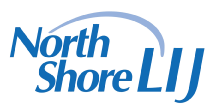- Home
- Media Kit
- Current Issue
- Past Issues
- Ad Specs-Submission
- Ad Print Settings
- Reprints (PDF)
- Photo Specifications (PDF)
- Contact Us

![]()
ONLINE

Managing New York’s Most Financially Successful Hospital System
Editors’ Note
Robert Shapiro has held his current post since August 2000. He joined the health system in 1984 as Director of Finance/Assistant Administrator and later became Vice President of Financial Operations. He began his career as a senior accountant with Blue Cross and Blue Shield of Greater New York and later joined Touche Ross & Company, before being appointed Assistant Director of Finance at Maimonides Medical Center in 1981. Shapiro received his Bachelor of Science degree from the State University of New York at Binghamton in 1975. He is a Certified Public Accountant and a Fellow of the Healthcare Financial Management Association.
Can you talk about the financial strength of North Shore-LIJ Health System over the past 24 months and how it is positioned looking forward?
In the middle of 2008, Michael Dowling was motivating the rest of the management team to improve performance across the entire health system.
During that time, we put in place an infrastructure that began to improve financial performance through efficiencies such as revenue cycles and supply chain process improvements, and through building additional volume.
When the financial crisis hit, it was a call to action. We immediately started figuring out how to reduce expenses and delay capital requirements.
Mark Solazzo, our Executive VP and COO, did a fabulous job at getting quick control over capital projects that could be delayed and went through a process of identifying operating expenses that could be delayed or eliminated.
So we came out of this crisis stronger than we have ever been.
How has the role of CFO evolved?
The role of CFO is no more complex from a financial perspective than it was 20 years ago. What is different is that health care is much more of a business now than when the industry was regulated by New York State.
Business principles are important for a successful health care organization, but that doesn’t mean we forget our nonprofit vision. We need to have a margin to reinvest in those activities that are important to our nonprofit mission and we need a create capital for future investment.
The future of health care involves constant change and capital investment, and our organization needs to be financially strong to deal with that.
As you have grown through acquisition, how critical has it been to develop a consistent culture?
From the moment Michael Dowling became CEO, he had a view of what the culture of this organization should be. He formulated his own thoughts on culture based on his own beliefs, and he visited CEOs around the country to understand their cultures and what they do to drive culture.
Michael reinforces that culture daily. He goes to every new employee orientation; he walks around the hospital; and he strongly encourages us to spend times in our shops or in the hospital, communicating that same message.
He also chose people for his team that he felt were already aligned with his values.
After five years, the culture permeated the organization, because those new hires that Michael met at orientation are now employed throughout the health system, and over the past few years, we reached that tipping point.•